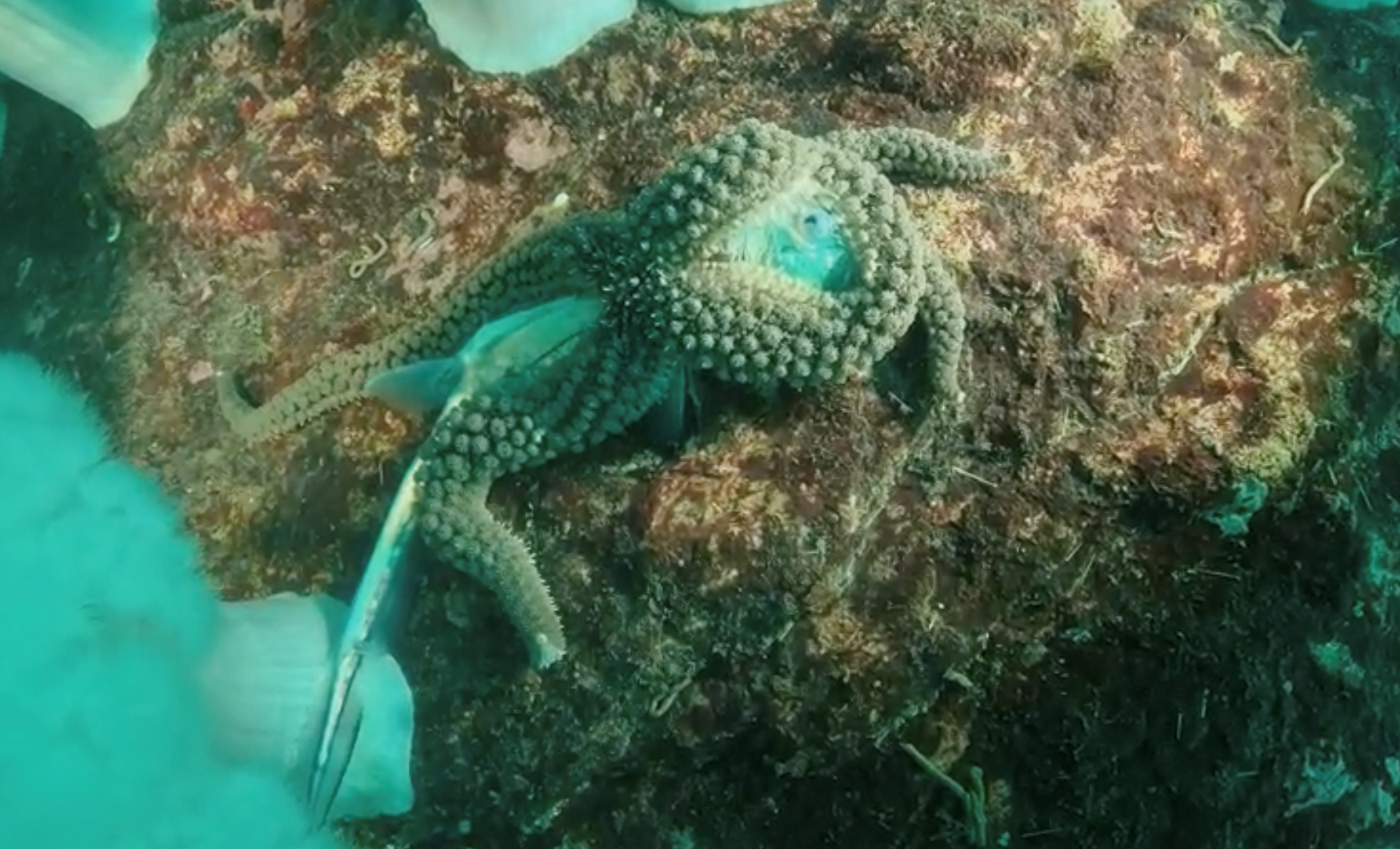Stylasterias forreri (de Loriol, 1887)Common name(s): Velcro star, Fish-eating star, Long-ray star, Black star |
|
| Synonyms: Asterias forreri, Asterias (Urasterias) forcpulata, Orthasterias forreri, Orthasterias leptolena |  |
|
Phylum Echinodermata
Order Forcipulatida
Suborder Asteriadina
Family Asteriidae
|
|
| Stylasterias forreri holding a ratfish it has presumably captured. Photographed in Howe Sound, British Columbia. Depth 45-55 feet (14-17 m). | |
| (Photo by: Joe Gaydos of the Seadoc society ) | |
Description: This seastar has 5 rays (arms) which are very long but not bordered by conspicuous marginal plates. The diameter of the oral disk is much less than 1/3 the total diameter. The aboral surface has very large spines (4-5 mm tall) which are separated from one another or aligned in rows. Large pedicellariae with long, crossed jaws are arranged in a gray circle around each large spine. The tube feet are yellow. Total diameter to over 50 cm, ray length to 33.5 cm. Aboral color black, dark brown, olive, straw, or gray (not red, orange, or white).
How to Distinguish from Similar Species: Stylasterias forreri is the only black seastar in our region. Orthasterias koehleri has a similar overall shape and presence of long aboral spines, but its pedicellariae have shorter teeth, plus O. koehleri can have straw, white, orange or even blue colors.
Geographical Range: Alaska (includng Arctic Ocean) south to southern California.
Depth Range: Subtidal, about 6 to 532 m depth
Habitat: Rocky or shelly-gravelly bottoms.
Biology/Natural
History: Has very
large, active, crossed pedicellariae
that it uses to catch fish (especially sculpins). Its main food,
though,
is snails such as Nucella
lamellosa, Calliostoma
ligatum, and Margarites sp.
Also eats chitons
and scallops.
The ectosymbiotic polychaete worm Arctonoe
fragilis may be found attached to it. Arms (rays)
may detach from the oral
disk if handled too forcibly. Can move up to 32 cm per
minute.
| Return to: | |||
| Main Page | Alphabetic Index | Systematic Index | Glossary |
References:
Dichotomous Keys:Kozloff, 1987, 1996
Carlton, 2007 (not keyed)
General References:
Gotshall
1994
Harbo,
2011
Lambert,
2000
Morris
et al., 1980
Scientific Articles:
Web sites:
General Notes and
Observations: Locations, abundances,
unusual behaviors:
This short video from SeaDoc society shows more visual angles taken of the seastar above
Authors and Editors
of Page:
Dave Cowles (2024): Created original page
CSS coding for page developed by Jonathan Cowles
Salish Sea Invertebrates web site provided courtesy of Walla
Walla University